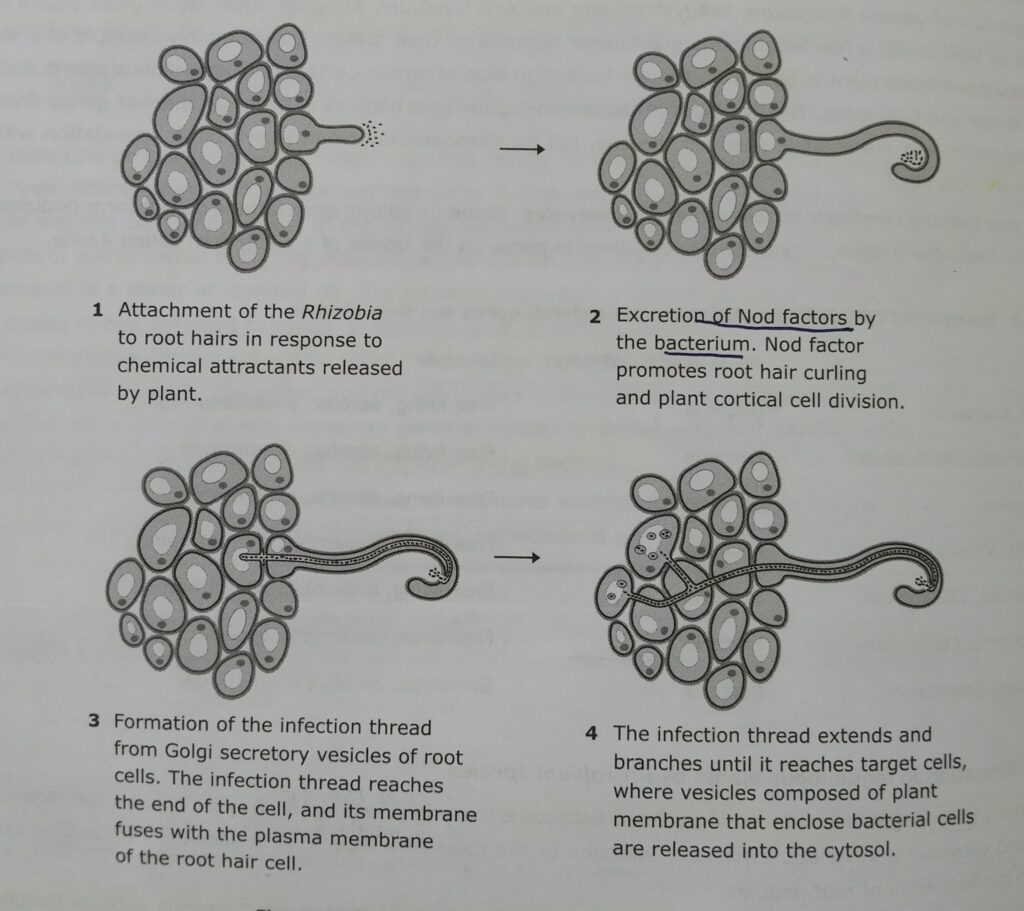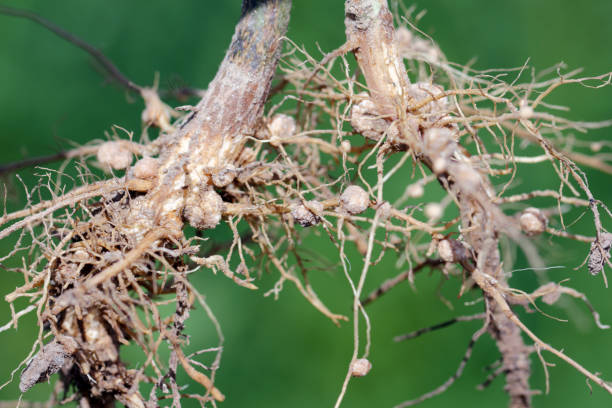Table of Contents
Infection of the roots of a legume with Rhizobium species leads to the formation of nodule in plants (in roots mainly). Rhizobium is a gram-negative motile rod-shaped proteobacteria that can grow free-living in soil or can infect leguminous plants and establish a symbiotic existence.
The steps of The formation of Nodule in plants by Rhizobium species:
- Rhizobia bind to an emerging root hair in response to chemical attractants sent by the plant.
- Chemotactic movement of free-living soil bacteria towards root is mediated by chemicals such as flavonoids, homoserine which was secreted by host plant root.
- A specific adhesion protein called rhicadhesin (calcium binding protein, which plays role in plant-bacterium attachment) is present on the surface of Rhizobium species.
- The legumes secrete signals, usually phenolics (often flavonoids or isoflavonoids), which can passively diffuse across the bacterial membrane. The bacteria identify the flavonoids using NodD genes.
- Interaction with the flavonoids activates NodD, then NodD returns to the rhizobium to induce the transcription of nodABC genes as well as other nod genes.
- Three of nod genes (nodA, nodB, nodC) encode enzymes that are essential for synthesis of nodulation factors.
- Nod factor are lipo-chitooligosaccharide, the derivative of chitin. Nod factor of all studied rhizobia are beta-1,4-linked N-acetyl-D-glucosamine.
- Nod factor induces root hair curling and trigger plant division.
- Nod factor are recognized by a specific class of receptor kinases that have so called LysM domains in their extracellular domains.
- During the infection process, rhizobia attached to the root hair releases Nod factor that induces curling of the root hair cells and sends mitogenic signals that stimulate cell division in the cell cortex.
- Cell division leads to the formation of nodules in root.
- Nod factor also induces several nodule-specific plant genes called nodulin genes.
- In the infected cell, the rhizobia divide and enlarge to form bacteroids, which are separated from the plant cytosol by peribacteroids membrane. Reduction of nitrogen to ammonia occur in bacteroids.
- Nitrogenase enzyme (produced by bacteria), which catalyzes this reaction, is very sensitive to oxygen. The oxygen level is regulated by leghemoglobin.
- Leghemoglobin gives legume nodules a pink color.

Classification of Nod genes:
Let’s revise the classification of nod genes in brief: Nod genes are two types
| Classification of Nod genes | Common nod genes | Host-specific nod genes |
| Name of the genes | nodA, nodB, nodC | nodP, nodQ, nodH, nodF, nodE, nodL |
| Found in | all rhizobial strains | some rhizobial strains |
| Function | encode enzymes that are essential for synthesis of nodulation factors | determine the host range |
Class 11 and 12 NCERT Biology PDF: Click here
Facebook link: https://www.facebook.com/share/p/34eGYg8gBN7oQVT8/?mibextid=oFDknk
Instagram link:
Another content useful for NEET aspirants and similar to 12th standard Biology:

